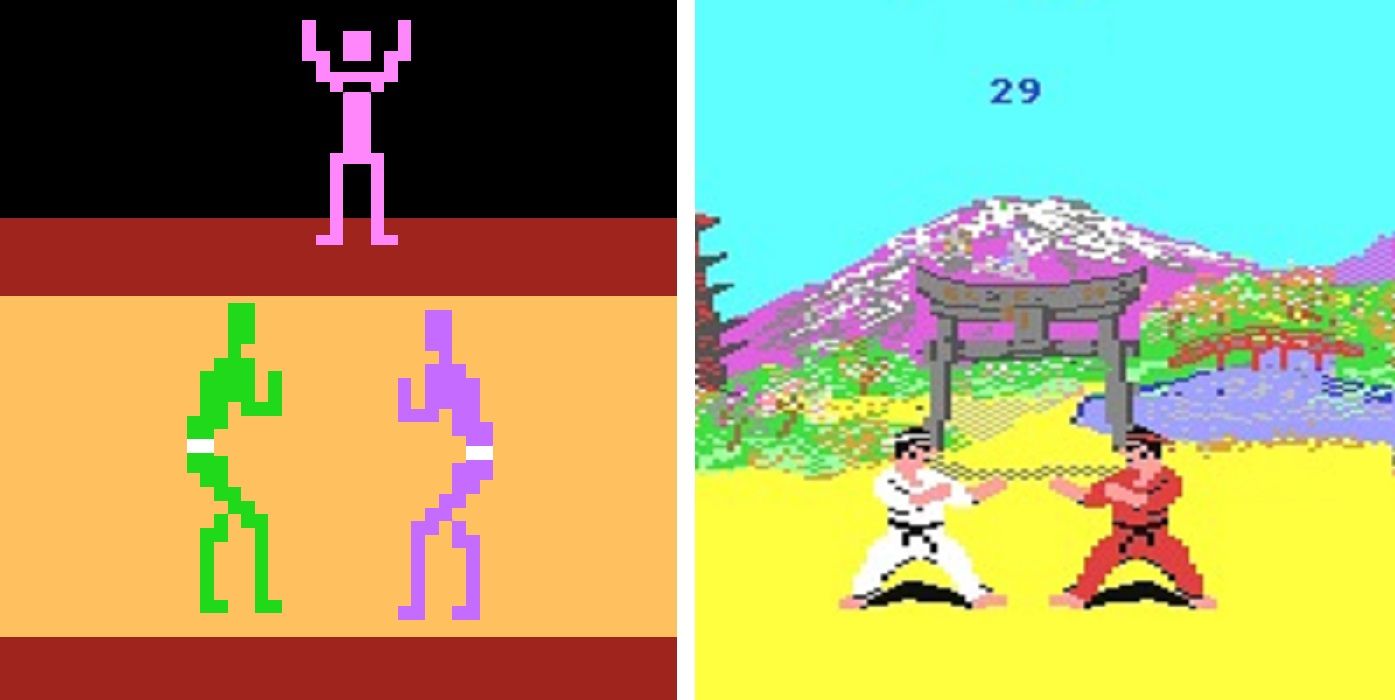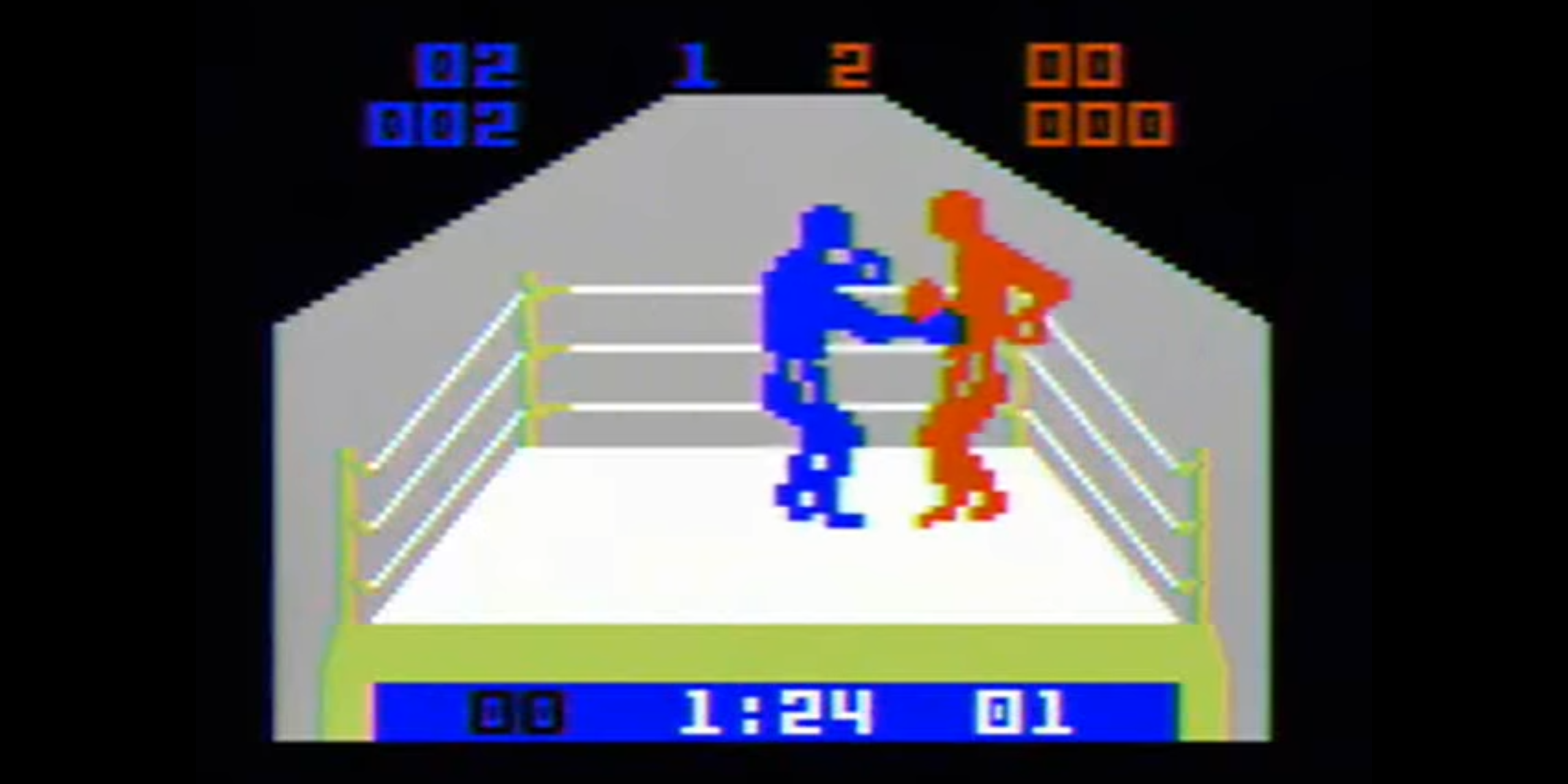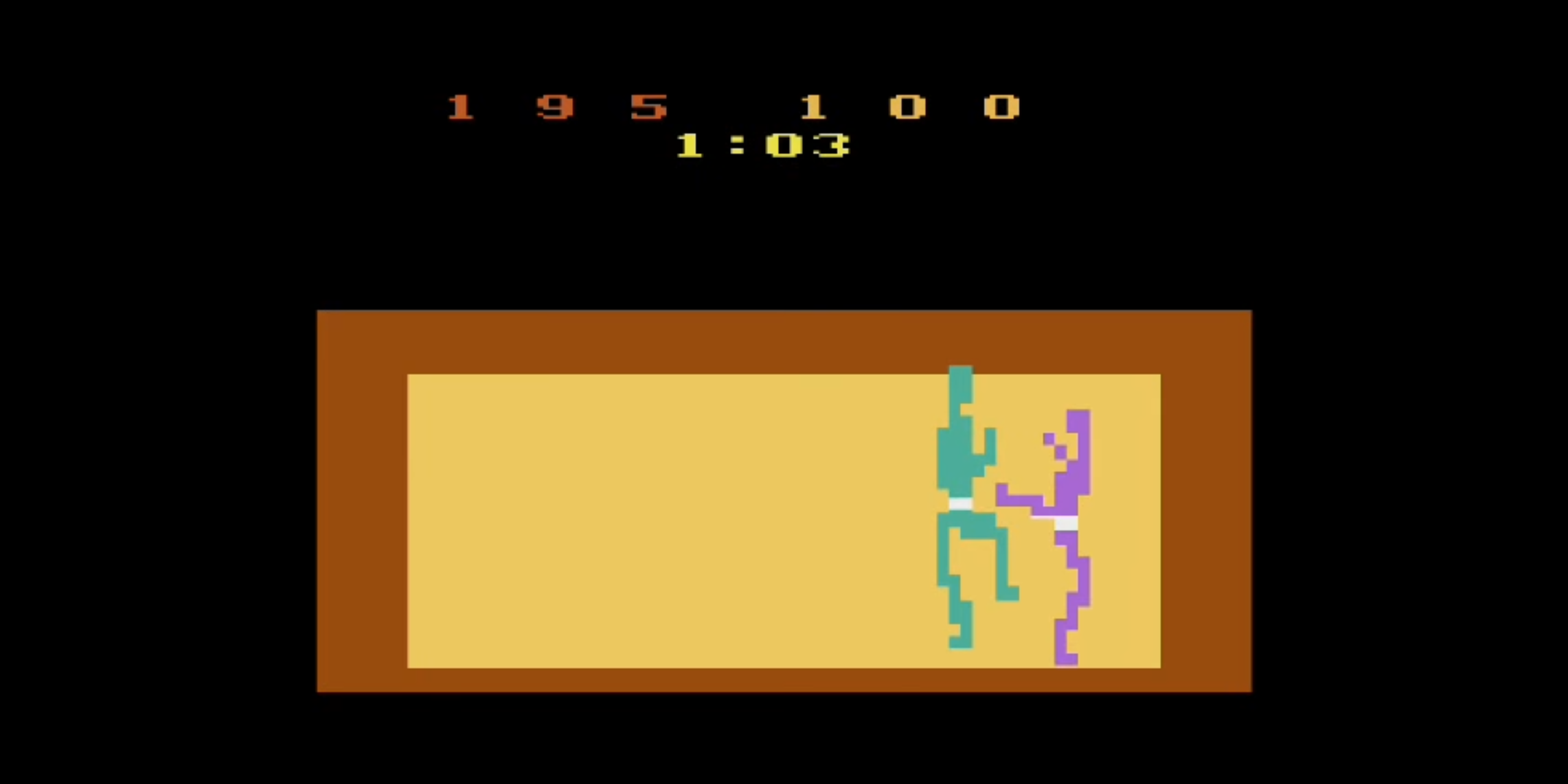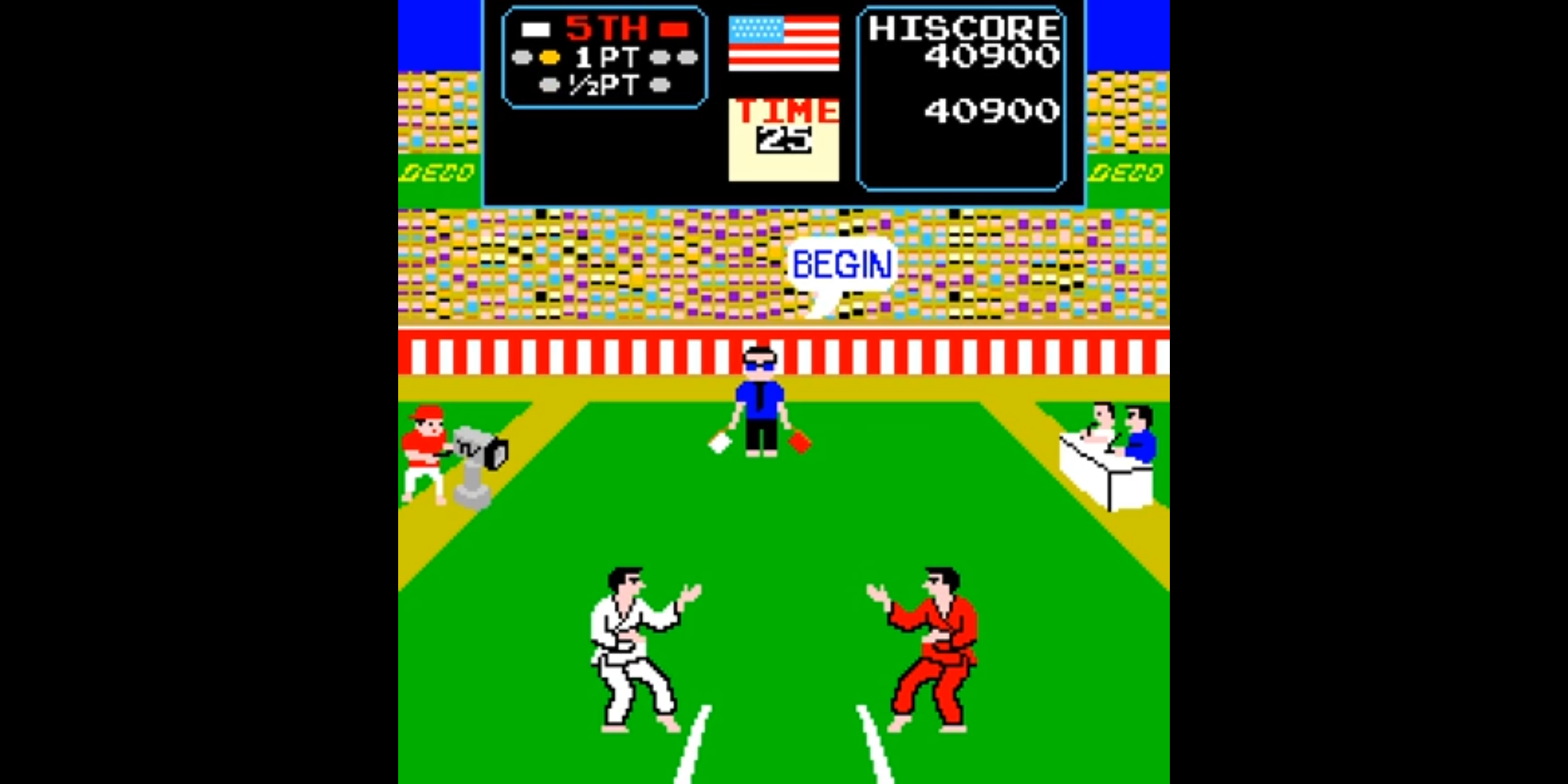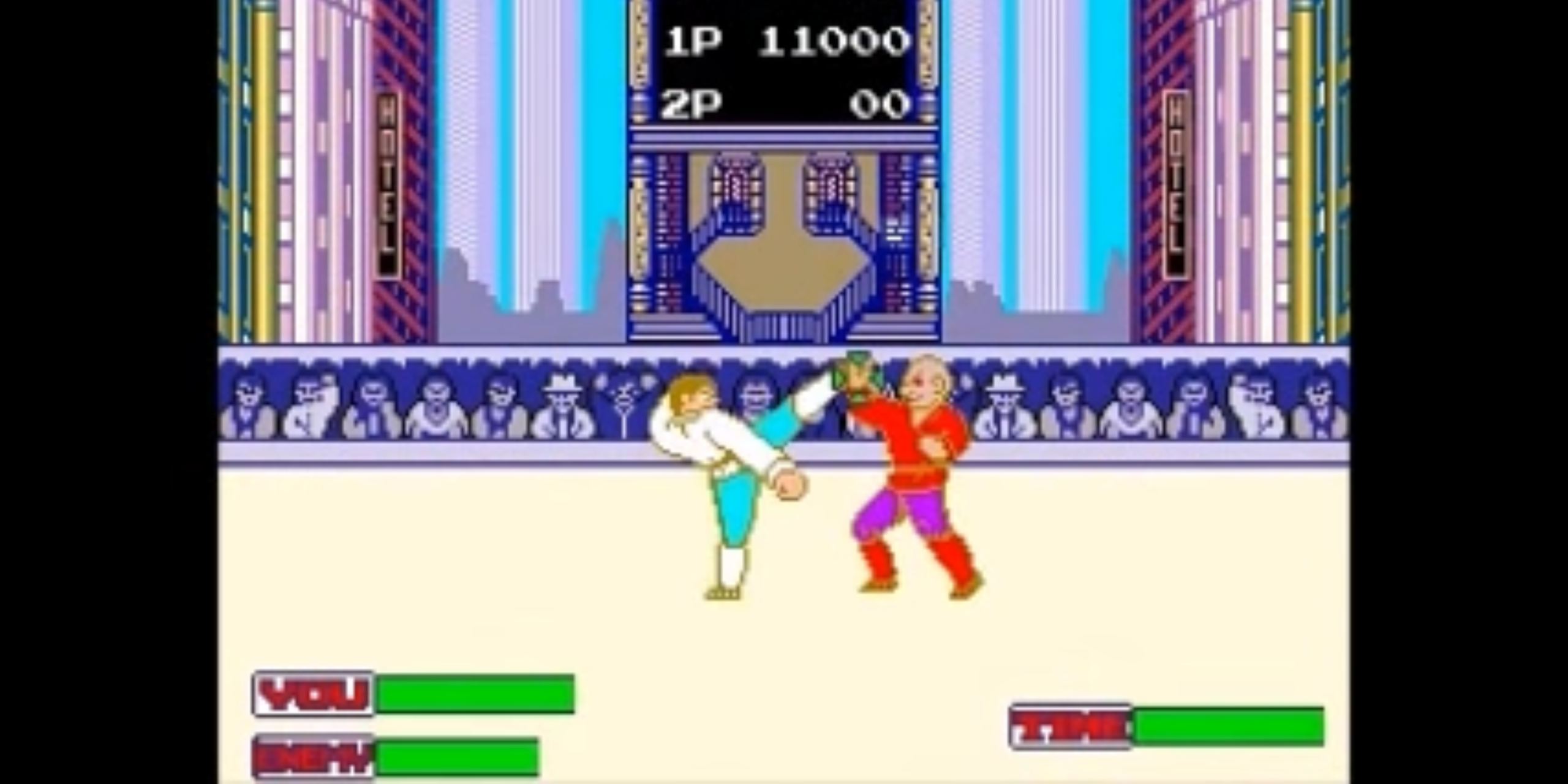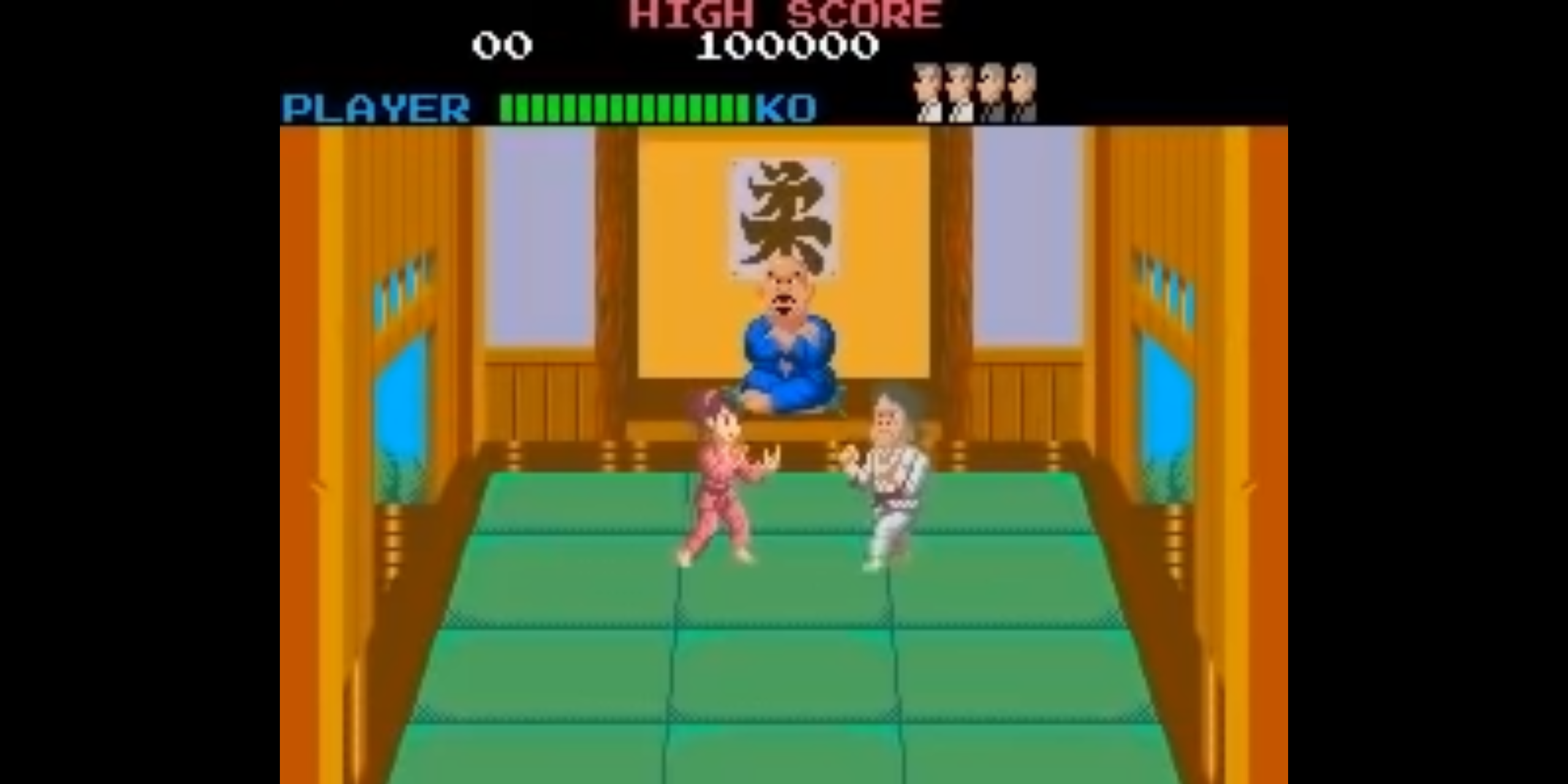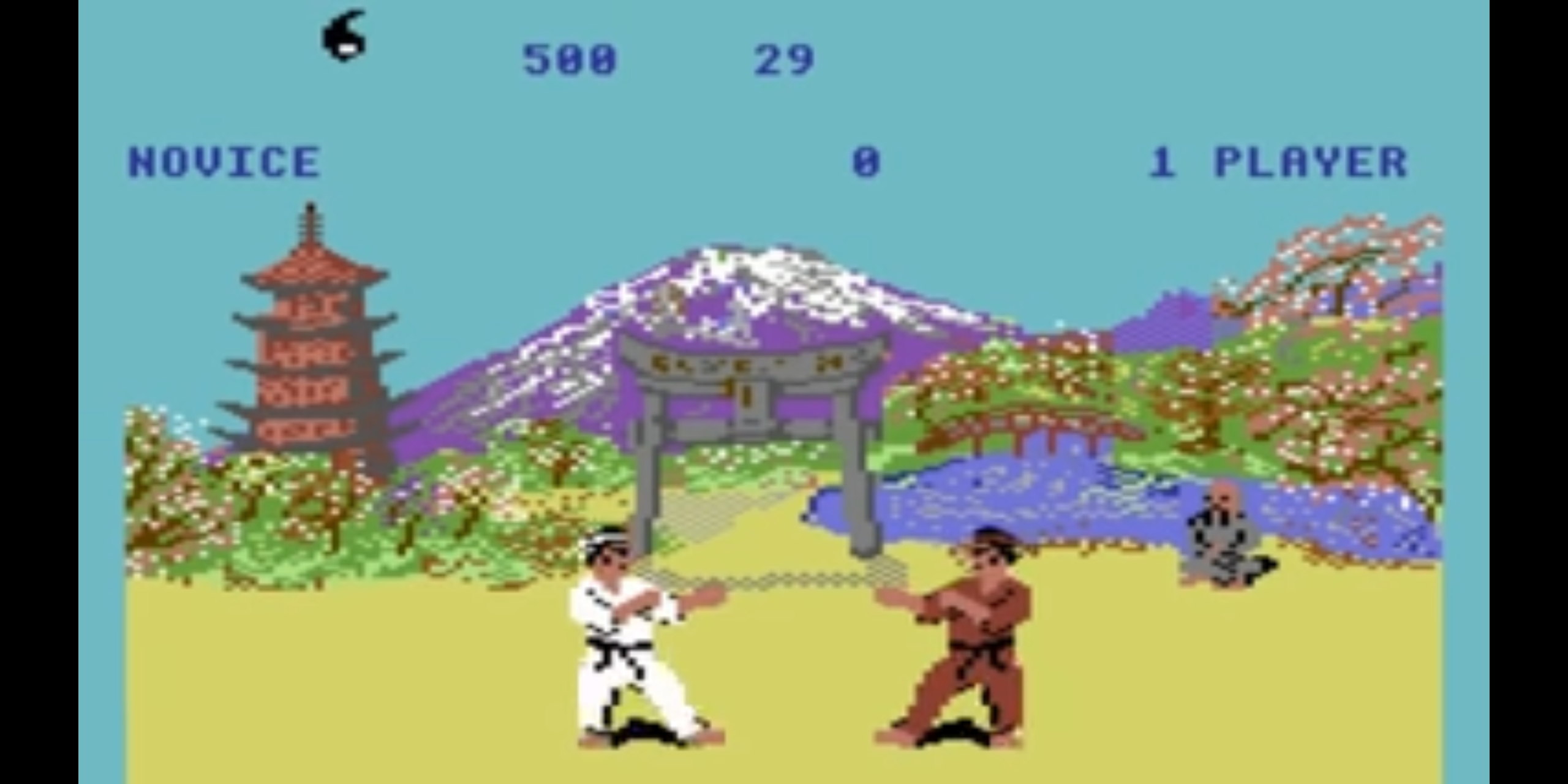The original Street Fighter arcade game was ambitious for a number of reasons. It was Capcom's first step into the fighting game genre and they went all out for it. 1987's Street Fighter featured a number of unique stages, a six-button system, special moves and a diverse cast of characters with their own backstories. It was also an utter critical and commercial failure. It wasn't until the success of Final Fight when Capcom tried again and made the universally beloved Street Fighter II.
Though it wasn't a major success, many companies were fascinated with Street Fighter, and it spawned many copycats at the time. There's no denying that it was iconic, regardless of how it performed. However, it wasn't the first fighting game to release. There are a number of fighting games released throughout the '70s and '80s that experimented with the one-on-one fighting formula before Capcom did it.
7 Warrior (1979) Was The First Non-Sports Game To Feature One-On-One Fights Between Human Characters
The '70s saw games really trying to come to terms with what could be done with the technology they had at the time. Arguably the first game to feature the modern fighting game formula was 1976's Heavyweight Champ by Sega, which featured Punch-Out style boxing action before Punch-Out.
However, 1979 saw the release of Warrior, which is arguably the first game to allow two players to go head-to-head. It was a top-down 1v1 fighter where players controlled swordsmen and could either try to knock each other out or force each other into holes on the map.
6 Intellvision Boxing (1980) Had Multiple Selectable Characters With Unique Stats
1979 saw the release of Boxing on the Atari 2600, a game that featured the ability to block attacks from the opponent with proper positioning. The Intellivision also got a boxing game titled Boxing the following year, but it featured a much more substantial contribution to the genre than Boxing on the 2600 did. While the Atari version had its layer of strategy in its game, there wasn't anything else that was very unique about it.
Meanwhile, Boxing on the Intellivision was giving console players the ability to choose from six different fighters, each one featuring their own special abilities.
5 Karate (1982) Pioneered The Idea Of Performing Special Moves With Specific Button Combinations
Boxing wasn't the only game on the Atari 2600. 1982 would see the release of Karate on the system. This game was not a success but it does warrant mention for its fighting system. This game pioneered the fighting game staple concept of holding the directional stick in any direction and pressing a button to get a special move.
It was undeniably ambitious for its time, but the limitations of the console held it back. It had sluggish movement and an extremely unreliable hit detection that made the game unwieldy at best and borderline unplayable at worst.
4 Karate Champ (1984) Introduced Eventual Genre Staples Like Holding Back To Block & The "Best Of 3" Round Set-Up
Back to the arcades with one of the most famous examples of the pre-Street Fighter fighting game, 1984's Karate Champ utilized a dual stick control scheme and also pioneered the mechanic of holding back to block attacks. It is also believed to be the first game to introduce the "best of 3" round system that has since become almost mandatory for fighting games.
It did not feature a health bar, rather the game decided the winner based on a point system, true to real life. With dozens of moves to learn and it's less-than-stellar, hard to read animation, even for the time, the game had a reputation for being extremely challenging. Regardless, it was a major step up.
3 Shanghai Kid (1985) Advanced The Genre With Early Combo & Countering Systems
1985 saw the release of Shanghai Kid to arcades. It featured multiple playable characters, as well as a health bar system. This game made a number of advances in fighting mechanics, but in exchange for these technological advances, the game's AI was noticeably lacking, relying less on reactions to the player and more on repeating the same moves over and over again.
However, there were a number of advancements to the fighting system itself. Shanghai Kid featured a rudimentary combo system and even a counter system, adding tons of strategy to fights.
2 Typhoon Gal (1985) Brought Women Into The Fray Along With More Freedom Of Movement On The Field
Also released in 1985, Typhoon Gal is notable in that it is regarded as the first fighting game with a female main character. It was also the first fighting game to differ from the strike-based combat systems of the games that came before it. As opposed to other games at the time which typically featured Karate as the main fighting style, Typhoon Gal had much more freedom of movement and was judo focused.
The only way to defeat an opponent was to throw them. The main character, Yuki, would regenerate health over time, giving players incentive to use the movement to their advantage.
1 Way of The Exploding Fist (1985) Presented A More Fluid Fighting Experience Than Ever Before
1985's Way of the Exploding Fist was a major hit for the time thanks to its cutting edge animation. This game was functionally a copy of Karate Champ, but did have the edge over that game in one crucial aspect.
Where Karate Champ's major weakness was its stiff animation that made it more challenging than it needed to be, Exploding Fist featured fluid character sprites that wowed players. In the time between the release of this game and Street Fighter, Exploding Fist was the hottest fighting game around and spawned many copycats.

